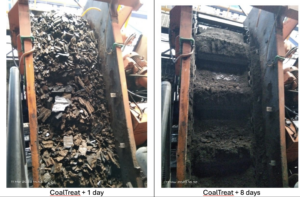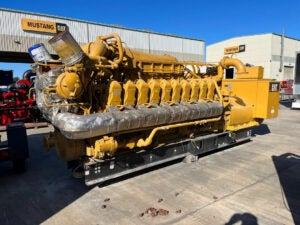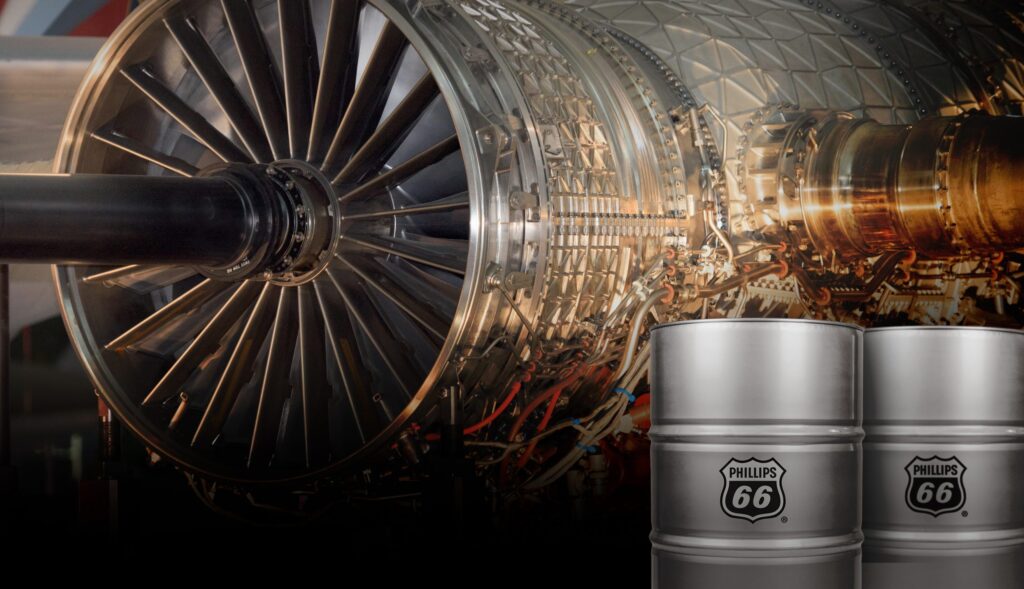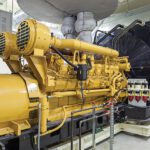
As the renewable energy sector continues to grow, so does the complexity of technology and equipment such as wind turbines, solar arrays, and transmission infrastructure.
Gear oils and lubricants are crucial for the reliable operation of gearboxes, enabling wind turbines to run smoothly and efficiently. Lubricants reduce friction, dissipate heat, and contain additives that further protect against wear and corrosion. Understanding the science behind gear oils—such as base stock grades, types, and additives—can illustrate how investing a little more in oil can save significant amounts in future repair costs and meaningfully extend the usable life of a gearbox.
Base Oil Groups
Gear and motor oils begin with base oils, which are classified into five groups based on their production processes and chemical compositions. The groups are:
■ Group I. Solvent-refined mineral oils are known for their affordability. These “conventional” oils have limited thermal and oxidative stability. They are typically used in less-demanding, low-cost, or short-interval applications, such as “break-in” oils that will be changed after a brief run-in period.
■ Group II. Hydrocracked mineral oils, often called semi-synthetic oils, offer improved oxidation resistance and a higher viscosity index than Group I oils. They are cost-effective for moderate applications and are the most common group in typical consumer oils.
■ Group III. Severely hydrocracked mineral oils provide performance closer to synthetic oils. They are commonly found in premium motor and industrial formulations.
■ Group IV. Polyalphaolefins (PAOs) are full-synthetic oils that excel in high-temperature stability, low-temperature fluidity, and oxidation resistance. PAOs are widely used in demanding industrial applications, including wind turbines.
■ Group V. This group includes all base oils not covered by Groups I–IV, such as esters, polyalkylene glycols (PAGs), and silicones. These oils are often used in specialty applications that require unique properties, such as extreme temperature performance or compatibility with certain materials.
 |
|
1. Wind turbines can present challenges for operations and maintenance personnel, particularly when it comes to lubricating several moving parts. Courtesy: Engineering Design & Testing Corp. |
The base stock determines many fundamental properties of the gear oil, including viscosity, thermal stability, and compatibility with additives. However, no single base oil can meet all the demands of modern gearboxes, especially in challenging applications like wind turbines (Figure 1).
Additives: The Unsung Heroes of Gear Oils
While base oils provide the foundation, additive packages are essential for tailoring a lubricant for specific applications. Additives enhance characteristics such as oxidation stability, wear protection, and corrosion resistance, ensuring that the lubricant meets the demanding requirements of gearbox operation.
Extreme-Pressure (EP) Additives. EP additives are a key component of gear oils, mainly when there are high contact pressures between metallic components. EP additives form a chemical layer on metal surfaces that prevents adhesion under extreme conditions. Unlike base oil, which relies on elastohydrodynamic lubrication (EHL) to prevent contact between metal components, EP additives work at a microscopic level when EHL breaks down. Common EP additives include sulfur-phosphorus compounds and molybdenum disulfide.
Anti-Wear Additives. While EP additives protect against extreme contact stresses, anti-wear additives safeguard against mild to moderate wear. Zinc dialkyl dithiophosphate, or ZDDP, is a widely used anti-wear additive that forms a protective film on metal surfaces.
Oxidation Inhibitors. These prevent the formation of sludge and varnish, which makes them desirable in wind turbine gearboxes due to their relatively long oil change intervals.
Viscosity Index Improvers. These additives help a lubricant perform consistently over a broad temperature range.
Corrosion and Rust Inhibitors. These additives create a protective barrier against rust and oxidation of metal surfaces in applications where components may be exposed to moisture or air.
SAE Gear Oils vs. Motor Oils
Many users are confused by the differences between SAE gear oil and motor oil weights. Although both use the SAE (Society of Automotive Engineers) grading system, their viscosity scales are not directly comparable.
While an SAE 75W-90 gear oil and an SAE 10W-40 motor oil may share similar viscosity levels, gear oils possess significantly higher film strength. They are specifically formulated to withstand higher contact pressures, while modern passenger car motor oils prioritize fuel economy and engine cleanliness.
Despite these differences, both oils have some similarities. They must maintain stable viscosity across various temperature ranges, resist oxidation, and protect against wear. However, EP additives are not well-suited for motor oil applications, as they can interact negatively with combustion byproducts and are unnecessary without the extreme contact pressures found in gear applications.
Application in Wind Turbines
Wind turbine gearboxes (Figure 2) operate under demanding conditions, facing rapidly changing loads, speeds, and temperatures. Choosing the proper lubricant can reduce downtime and ensure reliability.
 |
|
2. Gearboxes used in wind turbines operate under demanding conditions. Choosing the correct lubricant can reduce equipment downtime and ensure reliable operation. Courtesy: Engineering Design & Testing Corp. |
Due to their excellent low-temperature performance, oxidative stability, and extended service life, PAOs and esters are often preferred as base oils in wind turbine gearboxes. When combined with an appropriate additive package, oil formulated explicitly for wind turbine applications can offer significant advantages over standard gear oils.
The Case for High-Quality Oils
Premium gear oils may require a more significant initial investment. Still, this cost can be justified over the long term when considering the high expenses associated with gearbox replacements and the potential loss of generating hours. Due to their extended oil change intervals, high-quality lubricants can save time on preventive maintenance. The phrase “penny-wise, pound-foolish” comes to mind: spending a little extra now can lead to substantial savings for wind farm operators in the future.
While this discussion provides a high-level overview of lubricants, it’s important to emphasize that a well-formulated oil can maximize gearbox reliability for specific applications. Every aspect, from the choice of base stocks to the formulation of the additive package, is carefully considered to ensure that a particular oil meets the stringent operational demands in wind power applications. Investing in high-quality lubricants is not merely a maintenance decision—it’s a strategic choice for enhancing equipment performance, minimizing downtime, and protecting valuable assets.
If you do suffer damage to a gearbox or other such equipment, engaging an engineer may help in gaining valuable insights into the underlying cause of that damage, whether it be oil-related or the result of other mechanisms. While many operations do not have their own in-house resources that provide this expertise, there are engineering consultants—commonly referred to as forensic engineers—who are well-versed in root cause determination of machinery and equipment losses.
While many engineers find themselves making root cause determinations during their work, many forensic engineers specialize in this work, not only holding engineering degrees from accredited institutions but also obtaining their professional engineer (PE) license. To obtain this level of licensure, PEs must demonstrate proficiency in their craft and receive endorsement from other licensed PEs. They are also required to pass comprehensive licensure exams that pertain to their particular engineering discipline. To maintain this licensure, PEs must also meet requirements for continuing education, ensuring that they never stop learning and continue to grow the knowledge they can draw upon while completing their work.
You may explore working with forensic engineers with the expertise to assess damages in the renewable energy sector. Engineers must maintain licensure and continue to educate themselves in current and emerging energy technologies. When the unthinkable happens—a complete failure or a natural disaster—and the stakes are high, companies should turn to the experts. Companies need unmatched forensic engineering expertise and exceptional standards of excellence, and a practical approach ensures rapid, reliable answers that provide confidence and reassurance.
—Chris Spies, PE is a consulting engineer at Engineering Design & Testing Corp. Spies specializes in the forensic analysis of mechanical, vehicle, and industrial systems and equipment failures.










